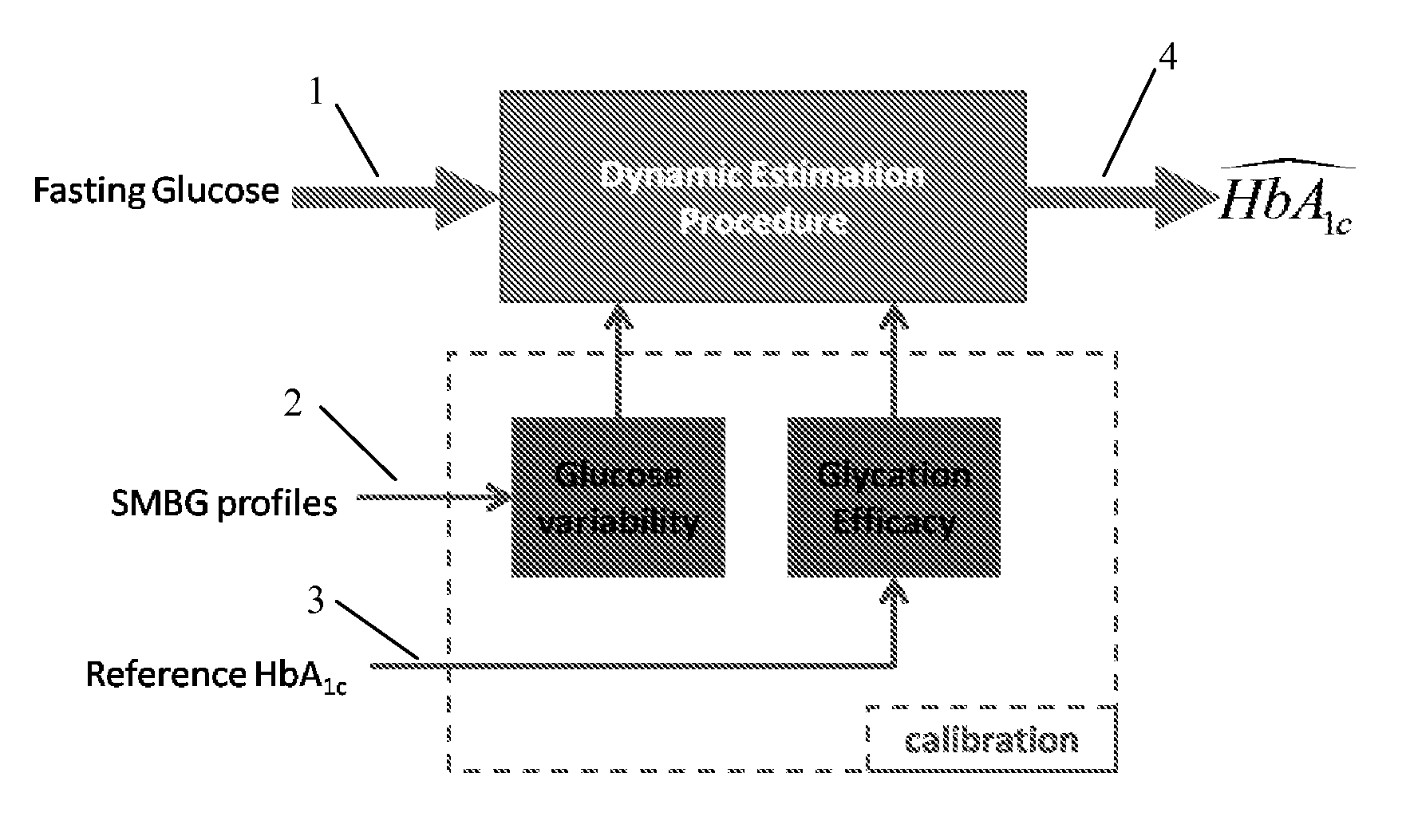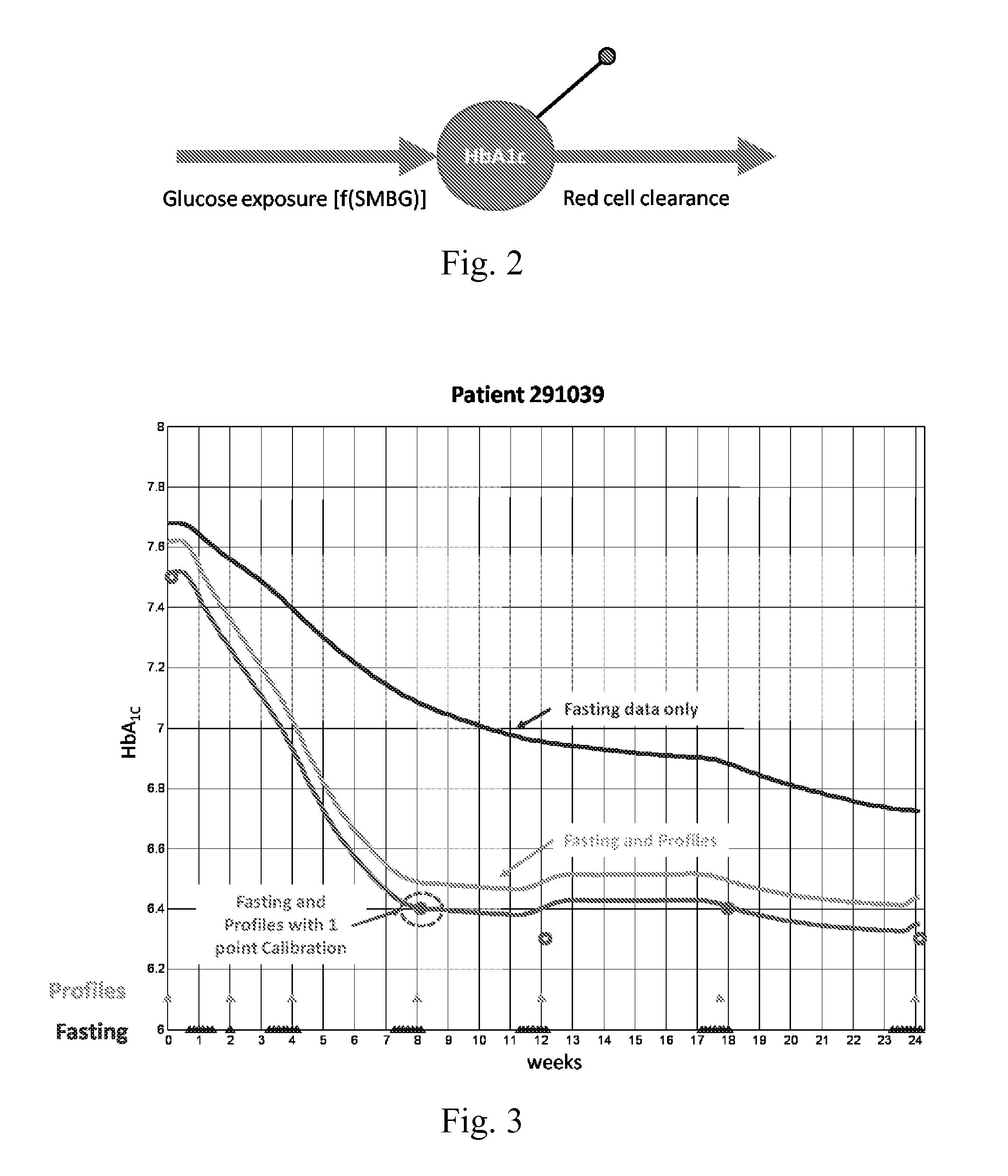Method and system for model-based tracking of changes in average glycemia in diabetes
a model and diabetes technology, applied in the field of model-based tracking of diabetes average glycemia changes, can solve problems such as unoptimized models and too optimistic models
- Summary
- Abstract
- Description
- Claims
- Application Information
AI Technical Summary
Benefits of technology
Problems solved by technology
Method used
Image
Examples
implementation examples
Summarization and Implementation Examples
[0133]In diabetes, the struggle for tight glycemic control results in large blood glucose fluctuations over time. This process is influenced by many external factors, including the timing and amount of insulin injected, food eaten, physical activity, etc. In other words, BG fluctuations are the measurable result of the action of a complex dynamical system, influenced by many internal and external factors. The macro (human)-level optimization of this system depends on self-treatment behavior. Thus, such an optimization has to be based on feedback utilizing readily available data, such as SMBG.
[0134]Although HbA1c is confirmed as the gold standard marker for average glycemia in both type 1 and type 2 diabetes,2,3 HbA1c assays typically require a laboratory and are routinely done only every few months. On the other hand, we have shown that providing real-time estimates of HbA1c increases patient motivation and results in improved diabetes contro...
PUM
 Login to View More
Login to View More Abstract
Description
Claims
Application Information
 Login to View More
Login to View More - R&D
- Intellectual Property
- Life Sciences
- Materials
- Tech Scout
- Unparalleled Data Quality
- Higher Quality Content
- 60% Fewer Hallucinations
Browse by: Latest US Patents, China's latest patents, Technical Efficacy Thesaurus, Application Domain, Technology Topic, Popular Technical Reports.
© 2025 PatSnap. All rights reserved.Legal|Privacy policy|Modern Slavery Act Transparency Statement|Sitemap|About US| Contact US: help@patsnap.com



